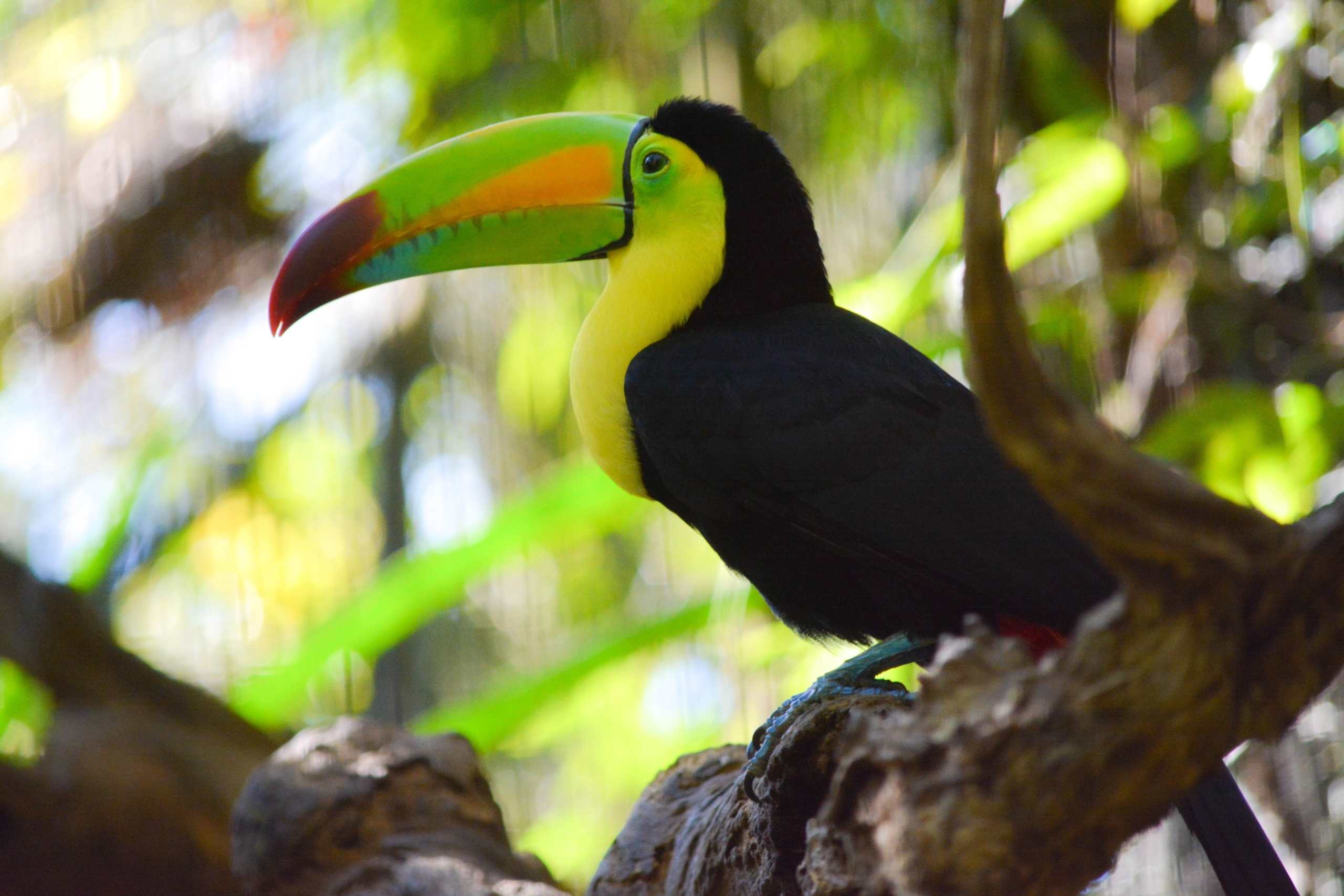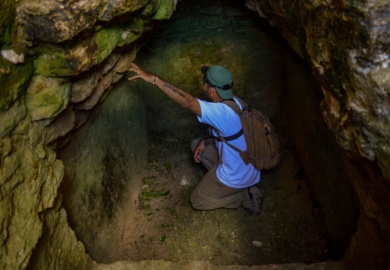By: Roni Martinez
Across diverse landscapes lies Belize’s big, bright world of feathered creatures.
GreenJayPerchLookLeft.jpg
From mountain ranges to wetlands, forests, and cayes, birding in Belize is exhilarating. The best time to birdwatch is between February and May, the breeding season for resident species. It’s a time when trails and back roads are dry and accessible. October and November offer a spectacular opportunity to observe migrant warblers and raptors along the coast.
Choose your destination, and keep your eyes peeled for these species.
Northern endemics: Corozal and Orange Walk
The Sarteneja coastline and its adjacent Shipstern Nature Reserve are little-known, but this northeast corner boasts species found nowhere else on earth. Composed of mangrove coastlines, warm shallow sea, fresh water lagoons, marshes, Yucatán dry forest, and a mix of urban and farmlands at the edges, you’ll find several Yucatán endemics: the Rose-throated tanager, Orange oriole, and Yellow-lored parrot.
Walk into the Shipstern’s forest to spot the Caribbean dove, Green-backed sparrow, and White-bellied wren. Take a boat ride out into Corozal Bay Wildlife Sanctuary onto tiny islands where colonies of neon-pink Roseate spoonbills, Wood storks, and Reddish egrets nest.
Further south, the Lamanai area holds another amazing mix of birds. A night boat safari along the New River can yield the much-sought Yucatan nightjar, Northern potoo, and Yucatan poorwill, all well-camouflaged birds. Along Dawson’s Creek and the adjacent savannah, it’s relatively easy to spot brightly colored Yucatan jays, the Gray-throated chat, and the Yucatan flycatcher.
Further west from Lamanai, along the miles of forest trails in the Rio Bravo Conservation area, Great curassows and Crested guans criss-cross playfully and then hide.
Central wetlands and mountains: Belize and Cayo
The Crooked Tree wetlands’ vast system of rivers, creeks, lagoons, marshes, and flood plains is a Ramsar Site since 1998. From February to May, as the water recedes and large mud flats appear, thousands of shorebirds, herons, Roseate spoonbills, egrets, and ibises congregate to feed. The Pinnated bittern, the Jabiru, and the stunning Black-collared hawk top the list.
Further west, the Mountain Pine Ridge and Chiquibul Forests offer a drier and higher elevation ecosystem for the Rusty sparrow, Cabanis’s wren, and a sub-species of Sedge wren unique to this Belize habitat. Rare raptors call this area home, too—among them, the critically endangered Orange-breasted falcon, arguably the most beautiful neotropical falcon, and the ultra-rare Solitary eagle. Up in the Bald Hills above 3,000 feet, some hilltops offer sweeping views of the Maya Mountains as far as the eye can see. Black-and-white Hawk-eagles and Stygian owls can be found here along the miles of back roads open to the more adventurous birders.
Just south, the Chiquibul Forest, the largest terrestrial protected area in Belize, keeps brilliantly-colored birds, including the only nesting grounds of scarlet macaws in Belize.
Southern lowlands: Stann Creek and Toledo
The sandy beaches of Dangriga and Hopkins attract Sandpipers and Plovers. Migrant species rest along the coast and use places like Gra Gra Lagoon and Hopkins’ wetlands as refuelling points. These large areas of partially flooded meadows and coastal marshes also offer relatively easy points to find Clapper rails, Yucatan vireo, and our resident Yellow warbler, also known as the “Mangrove warbler.”
A quick day trip into Mayflower Bocawina National Park or Cockscomb Basin Wildlife Sanctuary can yield the keel-billed motmot, the melodic Nightingale wren, and the Rufous-breasted spinetail. The Lovely cotinga and Crimson-collared tanager sometimes feed on the same fruits.
From Punta Gorda, day trips can be arranged to Aguacaliente Lagoon for Jabiru, Black-bellied whistling ducks, and the easy-to-miss Band-tailed barbthroat.
The islands: San Pedro to Lime Caye
Look for endemics like the Black Catbird, and other special species such as Caribbean elaenia, Brown boobies, and White-crowned pigeons. Pelagic species—the Bridled tern, Sooty tern, and Brown noddy—come to small islands, such as North Silk Caye, to nest. At Half Moon Caye, red-footed boobies and magnificent frigatebirds have a mixed but peacful colony.


